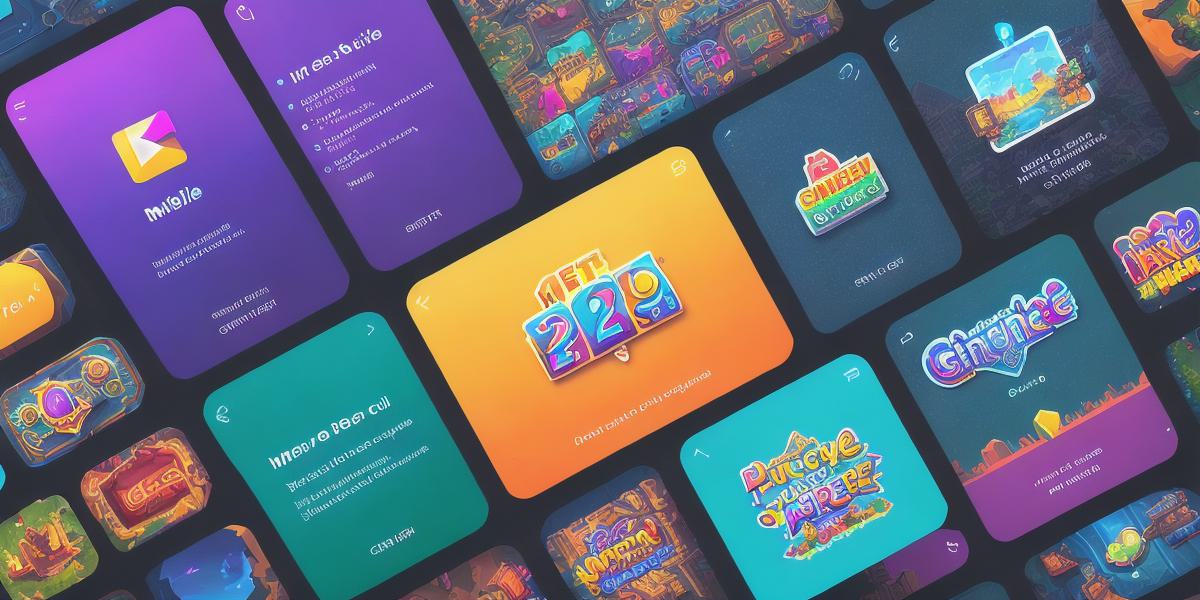If you’re an aspiring game developer looking to create a successful 2D mobile game, you may be feeling excited but also overwhelmed by the vast landscape of mobile gaming. With countless games vying for attention on app stores and in-game advertisements, it can be challenging to stand out from the competition and attract players. In this comprehensive guide, we will provide you with everything you need to know to develop a successful 2D mobile game, including game design, development, marketing, and monetization strategies.
Game Design:
The first step in developing a successful 2D mobile game is to have a clear and well-defined game design. This includes creating a concept, defining the game’s rules and mechanics, designing the game’s characters, environments, and user interface. It’s essential to ensure that the game is engaging, fun, and easy to play.
A successful game design also requires careful consideration of player psychology. Understanding what motivates players to keep playing and what they find frustrating can help you create a game that keeps them coming back for more. Additionally, it’s important to conduct user testing to gather feedback on your game design and make any necessary adjustments.
Market Research:
Conducting market research is an essential part of the game development process. It involves analyzing competitors, identifying target audiences, and understanding their preferences. By doing this, you can create a game that stands out from the competition and appeals to your target audience.
Effective market research requires tools such as surveys, focus groups, and app analytics. These tools help you gather data on player behavior, preferences, and feedback. This information can then be used to make informed decisions about game design, development, marketing, and monetization strategies.
Development:
Once you have a clear game design, the next step is to start developing the game. 2D mobile games can be developed using various game engines such as Unity, Unreal Engine, and Construct. These engines provide developers with a range of tools and features that make game development more efficient and accessible.
When developing your game, it’s essential to optimize it for performance and battery life. This includes minimizing loading times, reducing graphics and animations, and implementing efficient coding practices. By doing this, you can ensure that your game runs smoothly on all devices.
Additionally, it’s important to consider the scalability of your game. As your player base grows, so too will your development costs and resources. Ensuring that your game is designed with scalability in mind can help you avoid costly mistakes down the line.
Marketing:
Marketing is an essential part of any successful mobile game development strategy. There are various ways to market a 2D mobile game, including social media advertising, app store optimization, influencer marketing, and PR campaigns.
Social media advertising allows you to target specific audiences based on interests, behaviors, and demographics. App store optimization involves optimizing your game’s metadata and keywords to improve its visibility in app stores. Influencer marketing involves partnering with popular social media influencers to promote your game to their followers. PR campaigns involve reaching out to gaming journalists and bloggers to secure coverage of your game.
Creating a strong brand identity is also essential for effective marketing. This includes creating a catchy name, logo, and tagline that resonates with your target audience. By doing this, you can create a memorable brand that stands out from the competition.
Monetization:
Finally, monetizing your 2D mobile game is essential for success. There are various ways to monetize your game, including in-app purchases, ads, subscriptions, and licensing.

When developing your monetization strategy, it’s essential to consider the value proposition of your game. You should offer a compelling reason for players to spend money or watch ads, whether it’s access to exclusive content, ad-free play, or early access to new levels.
Case Study: Let’s look at an example of a successful 2D mobile game, Candy Crush Saga. Candy Crush Saga was developed by King and launched in 2012. The game quickly gained popularity, with over 500 million downloads worldwide.
